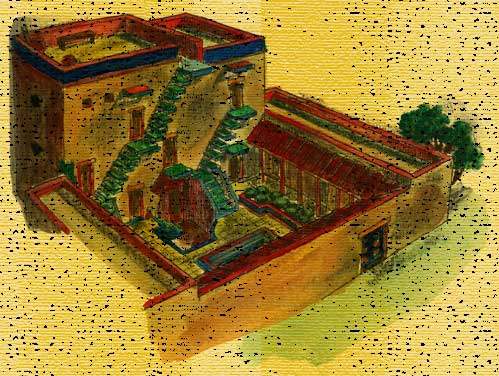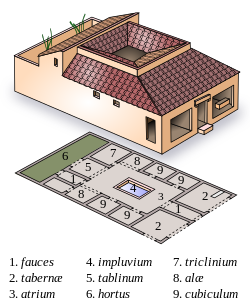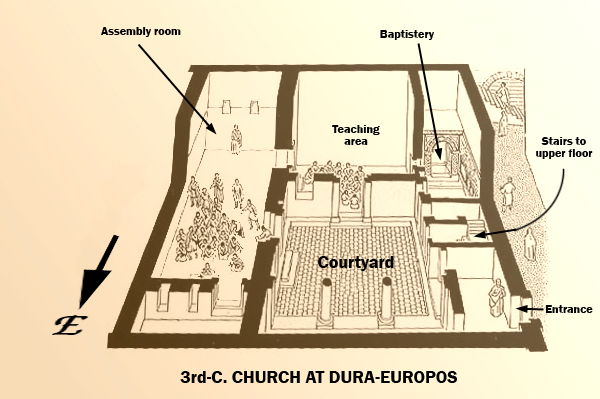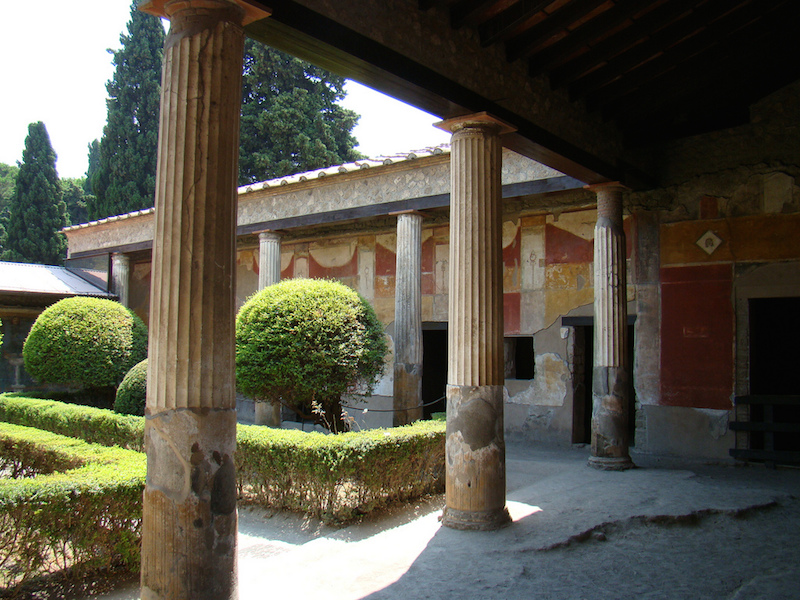House Churches
House churches were used in Rome as a safe haven for early Christians away from persecution.

The Context
In the early days of Christianity, followers of Christ met wherever spaces were available to them. Oftentimes these gatherings were held in wealthy people’s spacious living facilities. These places that early Christians met came to be known as House Churches. In Rome, these places served not only as a place to have Mass, but also as a haven from the Roman persecution of Christians.
This is a typical layout of a Domus style house in Rome that could be used as a House Church.

The Structure (Roman Domus-Style)
These houses were typically inwardly designed and built around a central atrium. Most of the other rooms were placed around the atrium with each designed for a specific function. These houses were often open to the sky to allow cool air to circulate throughout the house and adapt to the Mediterranean climate. Since there were also very few windows, it also allowed for light to enter the house.
The tablinum, a well decorated room with wall paintings and floor mosaics, served as the reception area or as the study for the head of the house. Curtains were also preferred to doors throughout the house as to keep a “visual axis” into different rooms.
Due to the lack of space in the cities there were generally no front lawns or walkways. Privacy was also much less than it is in society today. Houses sat right next to the street and the front portion of the house was somewhat considered a public space. People often left doors open and let others wander through their house. Rooms had varying levels of privacy as they were placed relative to the front of the house. The atrium, for instance, was much less private than the triclinium, the dining room of the house. (See graphic above) The house also had an outward facing storage room called the taberna which had no inward access to the house and also could be rented out to poorer clients for their own use.
This is one layout of a House Church based on an excavated house in Dura-Europos in what is present day Syria.

Relation to the Church
In the early days of Christianity, while Christians had a place to meet in the temple, Christians elsewhere needed somewhere to meet as well. Large houses of the wealthy such as these served as such places. These large houses also allowed Christians to meet in the same place and keep a tight knit community even as they grew in size. Due to the openness of the house, Christianity was also on display for all to see and open for anyone to come and partake in.
Traditionally, Roman culture often had different classes of people interact or eat in separate areas. For example, slaves or clients would not eat with their patrons and many times wives would not eat with their husbands. Church meetings within these typically segregated areas helped to even out social levels among its members. Being in such a close proximity with various different classes also helped to promote unity of the church. Due to their small size, they were also able to hold each other accountable for walking in Christ's footsteps. They grew as one family within the safety of these walls.
Gatherings were often held in the atrium as the initially small group of Christians grew larger.

Modern Application
Despite the age of this piece of church history, we can still derive a couple of lessons to take from the time of House Churches into our modern world. One of the most notable effects of House Churches on Christianity at the time was the unity that the members of the church shared with each other. They were all connected as one due to a common place of meeting and a smaller group of people. Similarly, in the Catholic world today, retreats can often offer a similar experience with a smaller group of people bonding together in Christ. Events like these within the Church can help us to share our experiences in the world and gain a better understanding of our faith with a group that we can feel connected to. Similarly to the smaller church community during the use of House Churches, people can also hold each other accountable and support each other when living out the faith. When one person falls away from Christ, the others can lift them back on to their feet and encourage them to be strong in their faith. Overall, we can look at the tight knit communities that these House Churches allowed for, and look to either create one ourselves or join another. This could mean joining a religious discussion group or even going on a weekend retreat in order to strengthen our faith in a smaller group setting.
Another notable attribute of the House Churches that affected the early Christian community was the openness of the houses. Catholics believe that every single person here on this earth is made in the image of God. As someone involved with the Catholic faith I believe that we can all work together to be more welcoming to people from every walk of life. People within and outside of the church should feel that the arms of God are wide open to them and that the Church will accept them no matter what. The church community can work together to break down doors of stigma and other biases to open up the doors of salvation to all who seek it.
If we take these attributes and apply them to the modern Catholic Church we can lead more people towards God and His salvation. We can build each other up to become stronger in our faith together.